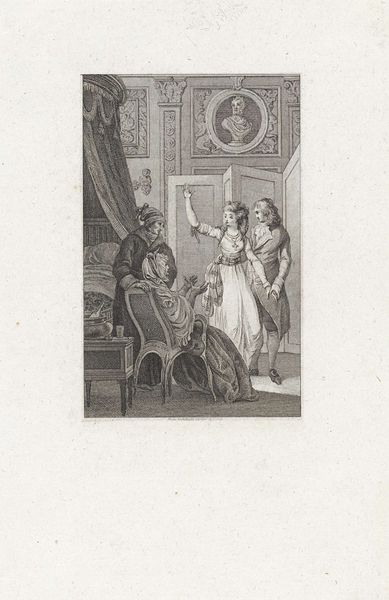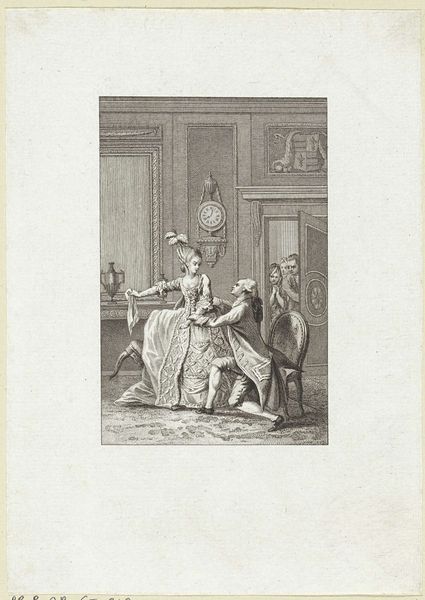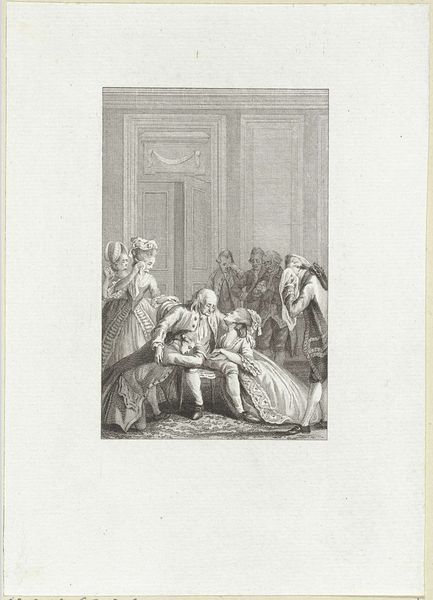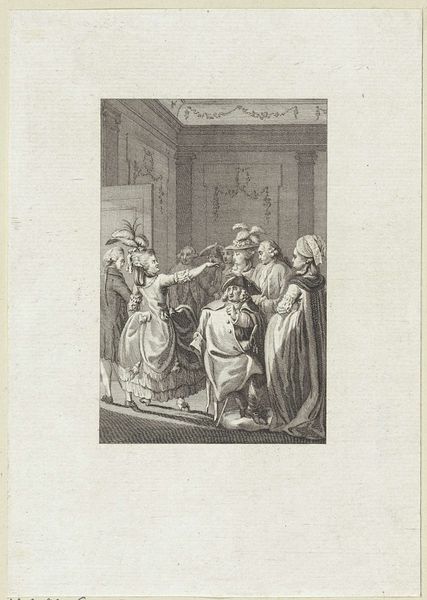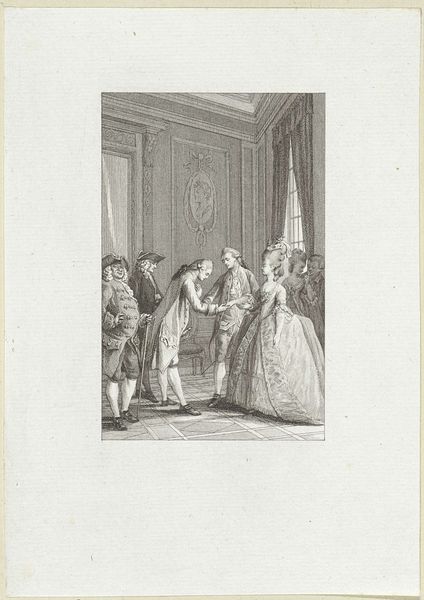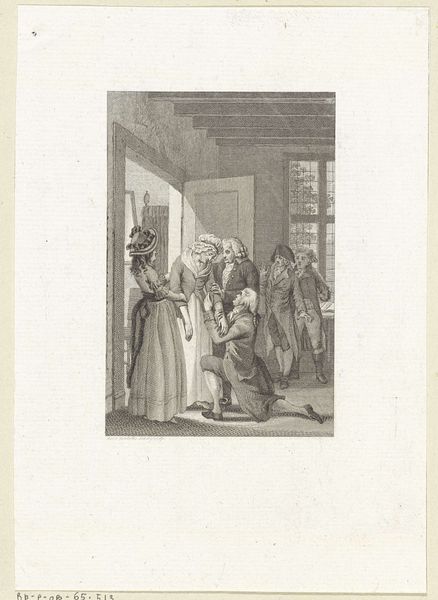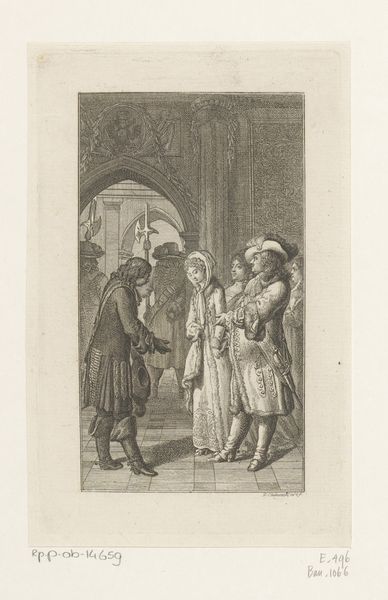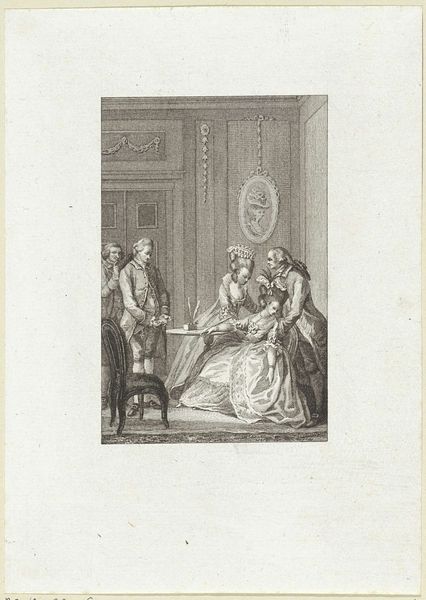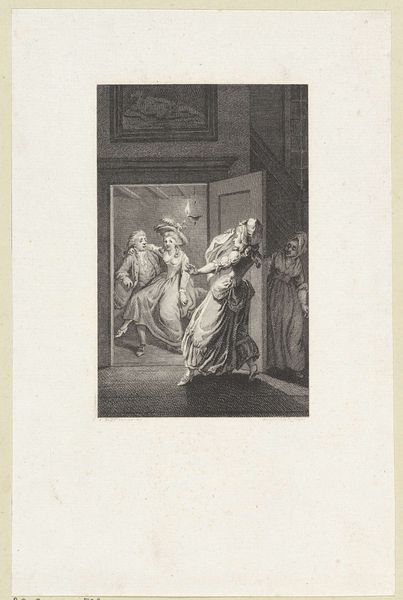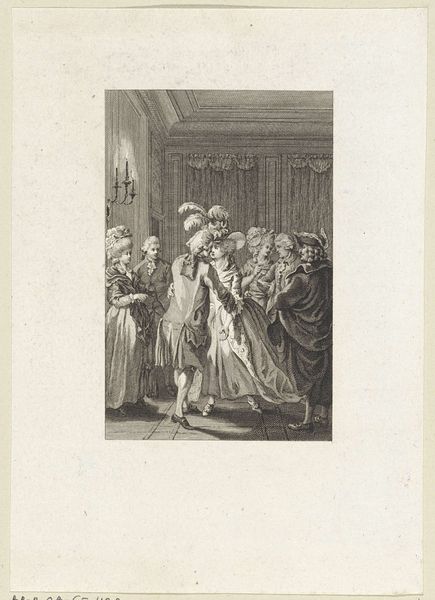
drawing, print, etching, paper, engraving
#
portrait
#
drawing
#
neoclacissism
# print
#
etching
#
old engraving style
#
paper
#
genre-painting
#
engraving
Dimensions: height 223 mm, width 150 mm
Copyright: Rijks Museum: Open Domain
Curator: This print, dating from 1790, is entitled "Twee mannen schudden elkaar de hand"—"Two Men Shaking Hands." Reinier Vinkeles created it. Editor: The neat formality strikes me first. It's a domestic scene, yet it feels posed, staged almost. What is it made of? Curator: Vinkeles made this using etching and engraving. The labor involved is interesting: the slow build-up of detail using tools like burins. Think of the social context too, this print could be mass produced and disseminated widely to a growing middle class, Editor: Indeed. And formally, the receding lines of the floor create depth, emphasizing the handshake in the center. I notice how the light, though subtle, draws the eye to the figures' faces. Semiotically, what do you make of the composition? Curator: I think the very act of circulating images like these served to reinforce societal norms about conduct and decorum. Who commissioned the image and to what purpose, I wonder. This speaks to issues of patronage and class structures of the time. The paper would have also had relative cost, and speak to different forms of art consumption and value for money, especially compared to an oil on canvas of that size, that would be magnitudes more expensive. Editor: Perhaps. Although the gesture itself appears universal, this rendering conveys a specific idea of grace within an interior that echoes neoclassical taste. The wallpaper, for example, provides a muted yet ornamental backdrop. Look at how the light in the back shows a second meeting, a subtle doubling of gestures, that I think also serve to communicate the essence of meeting in society Curator: Good eye for spotting that doorway back there! In this setting, these are very refined figures who perhaps are a representation of the elite, showing people of importance greeting. I wonder, if you look at how gender and social role intersect in printmaking, is that significant here in the reception of the image? It feels relevant in regards to interpreting Vinkeles work beyond aesthetics. Editor: The fact remains that he uses simple formal arrangements to suggest something bigger, grander and timeless and this transcends any labour processes of patronage which has no baring on it's aesthetics Curator: Interesting. I still think understanding the processes can expand the way we can experience artworks Editor: And I think there is value to extracting details that go beyond any social condition
Comments
No comments
Be the first to comment and join the conversation on the ultimate creative platform.
